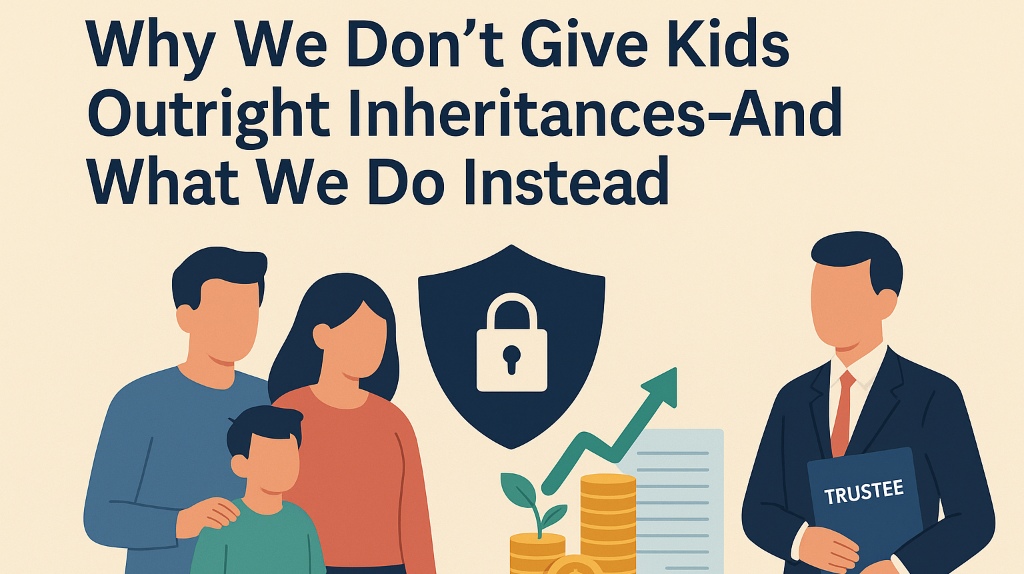When most people think about leaving money to their children, they picture writing a will and splitting assets equally. Simple, right?
Unfortunately, that “simple” plan often leads to big problems: lawsuits, divorces, blown inheritances, and massive tax bills.
At L. Jennings Law, we do things differently—and for good reason. Here’s why giving kids outright inheritances is risky and what our unique trust structure does to protect your family and your legacy.
The Problem with Outright Gifts
Giving assets directly to your children sounds generous—but it can turn into a nightmare if:
- Your child divorces (half your gift could go to an ex-spouse).
- They face creditors or lawsuits.
- They mismanage money or face addiction issues.
Even “tiered distributions” (like 1/3 at 30, 1/3 at 35, the rest at 40) aren’t much better. Those age-based plans assume responsibility magically arrives on a birthday. Once the trust ends, all protection ends too.
Our Solution: Protection + Flexibility
We’ve designed a unique trust model that gives the best of both worlds:
- Asset protection: Your child’s inheritance stays safe from divorce and creditors.
- Flexibility: Funds can be used for real-life needs without court involvement.
- Tax savings: When planned correctly, distributions can be taxed at individual rates instead of compressed trust brackets.
Here’s how it works:
1. Independent Trustee Discretion
An independent trustee can distribute funds for any purpose. If no independent trustee is serving, we fall back to a HEMS standard (Health, Education, Maintenance, Support).
2. Annual Withdrawal Right (5 & 5 Power)
Each beneficiary may withdraw the greater of $5,000 or 5% of their trust annually. This gives them limited autonomy without exposing the entire inheritance.
3. Strong Asset Protection
Because your child doesn’t own the trust outright, it’s shielded from lawsuits and divorces—while still being available for their benefit.
When Do We Customize This?
In some cases—like when the trust holds a business or a large IRA—we may implement advanced planning for tax efficiency (like a §678 trust), but only when:
- The beneficiary is responsible and financially mature,
- The family’s net worth justifies the complexity, and
- There’s a clear need for income-tax efficiency.
Otherwise, we stick to our proven default model.

Why This Matters
This isn’t just about protecting money. It’s about empowering your family.
When combined with a strong financial plan, this approach helps beneficiaries make wise decisions and creates multi-generational impact. It’s stewardship in action—and that strengthens families and communities for decades to come.
Ready to protect your family’s legacy?
Book a strategy session with L. Jennings Law and let us design a plan that gives your loved ones security, flexibility, and financial wisdom.







